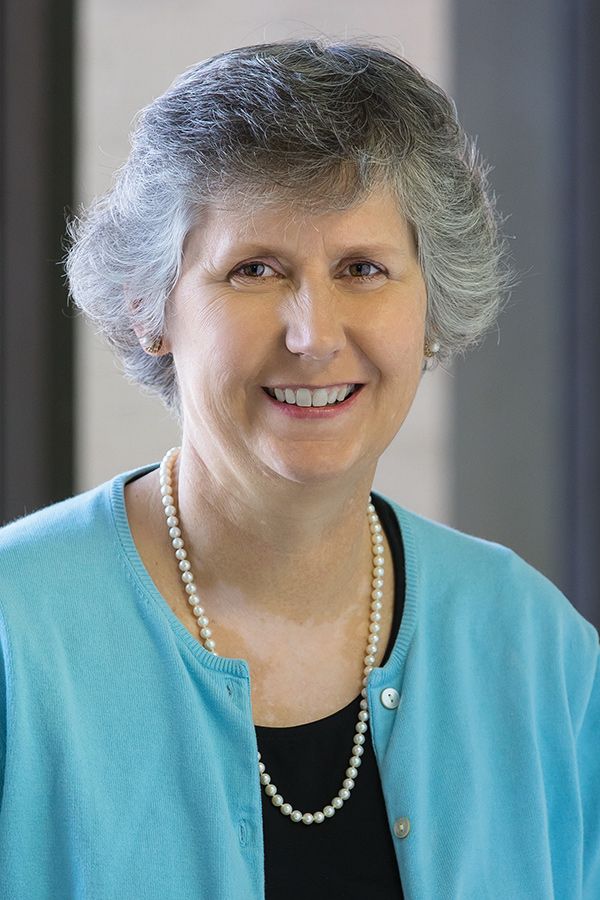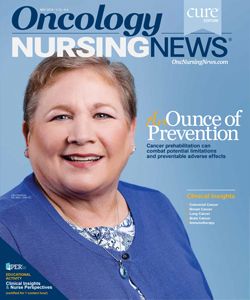How to Advise Patients About Direct-to-Consumer Genetic Testing
Mail-in DNA tests may not provide enough information to people looking for answers about their genetic predisposition to cancer.
Suzanne M. Mahon, RN, DNSc, AOCN, AGN-BC

Your patient, a 55-year-old woman with estrogen receptor-positive, progesterone receptor-positive, HER2-negative breast cancer, says she is thinking about doing direct-to-consumer genetic testing (DTCGT) to see whether her children are at increased risk for developing breast cancer. How should you respond? Later that day, your 35-year-old neighbor, who is a mother of 2 children, stops you and asks which online genetic testing company you think is best. What should you tell her?
DTCGT is now a reality, and oncology nurses are going to get more and more questions from patients about what it is and whether they should do it. We have a responsibility to educate these patients and their families about it.
BEGIN WITH ASSESSMENT
There are a number of factors to consider when discussing DTCGT with a person who has breast cancer. Before you respond, more information is needed. What is her family history: Is it suggestive of hereditary risk? Is she worried about hereditary risk? Does she know the strengths, limitations, and risks of genetic testing? Does she understand the possible range of results that might be reported?
DTCGT is not likely to accurately clarify genetic risk for developing cancer in your patient and neighbor or their families. If family history is not suggestive of hereditary risk, there is an opportunity to provide education about what DTCGT will or will not do. Oncology nurses have a professional responsibility to identify patients who may have hereditary predisposition to developing cancer and assure that they get referred to appropriate resources and professionals who can guide them through risk assessment and the genetic testing process when it is appropriate.1,2
FACTS ABOUT DIRECT-TO-CONSUMER GENETIC TESTING
Until 2006, only healthcare professionals could order genetic testing. Then 23andMe launched at-home genetic testing.3 DTCGT is marketed straight to consumers through television, print advertisements, and the internet, including social media. This form of testing provides limited access to an individual’s genetic information without necessarily involving a healthcare provider. Typically the individual reads about the test online, orders the desired test, pays by credit card, receives a kit by mail, obtains a saliva sample, mails the test back to the laboratory, and receives results usually online through a password- protected account. The apparent simplicity and relative low cost (approximately $100-$250) make it attractive.
Risk for developing various diseases can also be discerned through DTCGT. This has been a controversial area. The original 23andMe kit provided tests for the 3 BRCA founder mutations. In 2013, the FDA pulled the health risk testing in the 23andMe kit, limiting the test to ancestral information and some traits.4 In April 2017, the agency agreed to allow 23andMe to add back to the test kits its limited genetic testing for about 10 medical conditions, including Parkinson disease and late-onset Alzheimer disease.5 At that time, the FDA planned to exempt other 23andMe genetic health risk tests from premarket review. Further, it indicated that companies offering similar tests might be able to forgo intensive regulatory review after submitting the first premarket plan.4 In March 2018, 23andMe added the 3 founder BRCA mutations back to the test, opening the door to add other health risk tests without additional market review.6
DTCGT can also include testing for a variety of other human traits.7 These might include alcohol flush reaction, caffeine consumption, earwax type, deep sleep patterns, genetic weight, lactose intolerance, muscle composition, sleep movement, and presence of a unibrow. Trait reports are based on the presence of one or more combinations of single-nucleotide polymorphisms (genetic variations that represent a difference in a single nucleotide in the DNA); the clinical utility or usefulness of this information is often very limited.
DTCGT is big business, accounting for an estimated $230 million in business annually.8 Regulatory oversight is confusing, however. In the United States, the Clinical Laboratory Improvement Amendments of 1988 require that laboratories providing DTCGT results to the public are certified and employ certain basic practices, although there is no assurance that the DTCGT will offer clinical validity or utility. The only oversight by the FDA on testing for genetic diseases is in the regulation of test kits marketed and sold to labs for use in testing procedures. The Federal Trade Commission is responsible for assuring that advertising about DTCGT is honest and not misleading.
RESPONDING TO QUESTIONS
Oncology nurses need to ascertain whether the personal and family histories are suggestive of hereditary risk. For individuals with early-age- onset cancer or multiple family members with a diagnosis of cancer, referral to a genetics professional is the appropriate next step. DTCGT is not likely to provide accurate or comprehensive information about hereditary risk for developing malignancy. Interpreting results can be challenging, especially when a knowledgeable healthcare provider is not readily available to explain the results and the implications for other family members.
Prior to engaging in genetic testing, individuals should have enough information to make an informed decision. Informed consent may be difficult to obtain from the fine print on the company’s website. Individuals need to realize there are no protections for life, long-term care, or disability insurance and that these limitations should be considered and addressed prior to testing. Individuals engaging in DTCGT need to realize that the company may sell and use the DNA it collects for other research or commercial endeavors.
DTCGT is not going away. It will likely become more prevalent and more complex. Patients, their families, and neighbors are going to casually remark that they engaged in DTCGT or ask about it. Oncology nurses need to be prepared and proactively and accurately address concerns about genetic testing.
Suzanne M. Mahon, RN, DNSc, AOCN, AGN-BC, is Professor, Division of Hematology/Oncology, Department of Internal Medicine, and Professor, Adult Nursing, School of Nursing, Saint Louis University.
References
- American Nurses Association and International Society of Nurses in Genetics. Scope and Standards of Practice: Genetics/Genomics Nursing 2nd ed. Silver Spring, MD: American Nurses Association; 2016.
- Hampel H, Bennett RL, Buchanan A, Pearlman R, Wiesner GL. A practice guideline from the American College of Medical Genetics and Genomics and the National Society of Genetic Counselors: referral indications for cancer predisposition assessment. Genet Med. 2015;17(1):70-87. doi: 10.1038/gim.2014.147
- Stoeklé H-C, Mamzer-Bruneel M-F, Vogt G, Hervé C. 23andMe: a new two-sided data-banking market model. BMC Med Ethics. 2016;17(1):19. doi: 10.1186/s12910-016-0101-9
- Wynn J, Chung WK. 23andme paves the way for direct-to-consumer genetic health risk tests of limited clinical utility. Ann Intern Med. 2017;167(2):125-126. doi: 10.7326/M17-1045.
- Check Hayden E. The rise and fall and rise again of 23andMe. Nature. 2017;550(7675):174-177. doi: 10.1038/550174a
- May A. Test risk of breast cancer from home with new FDA-approved DNA kit by 23andMe. USA Today. March 7, 2018, 2018.
- Finney Rutten LJ, Gollust SE, Naveed S, Moser RP. Increasing Public Awareness of Direct-to-Consumer Genetic Tests: Health Care Access, Internet Use, and Population Density Correlates. J Cancer Epidemiol. 2012;2012:7. doi: 10.1155/2012/309109
- Su P. Direct-to-consumer genetic testing: a comprehensive view. Yale J Biol Med. 2013;86(3):359-365.

Olaparib Plus Chemo May Not Improve Outcomes vs Chemo Alone in BRCA Wild-Type TNBC
April 23rd 2024Patients with BRCA wild-type triple-negative breast cancer treated with olaparib on a gap schedule with chemotherapy did not experience improved responses compared with chemotherapy alone in the neoadjuvant setting.
Nurse Practitioners Weigh in on Data From the San Antonio Breast Cancer Symposium
January 16th 2023Loyda Braithwaite, MSN, RN, AGPCNP-BC, AOCNP; and Jamie Carroll, APRN, CNP, MSN, highlight presentations from the 2022 San Antonio Breast Cancer Symposium that will influence oncology nursing practice.




